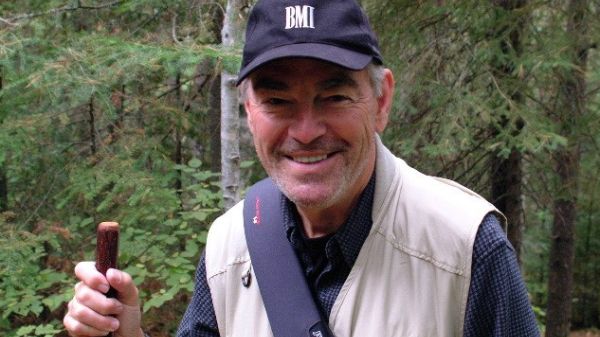Connecting to Nature - Some Perspectives

Connecting Nature - Perspectives From Rolland G. Smith
The Question: How does connecting to nature impact you/what stories does this bring to mind?
Story 1
Many years ago, I met the chief priest of the national forest of Togo. He came to a conference at Oxford College in Great Britain.
It was cold at that time in England. The priest wore no shoes. I asked him why he wore no shoes. He said, “to feel the earth.”
Recently I read an essay on spiritual ecology, and it talked about connecting to nature through the senses and feelings of the body.
It brought back atavistic sensations of when I was an adolescent camping with friends as a young teenager. In those days, we didn’t have the foam pads and air-mattresses of today. We had an old plastic tablecloth as a ground cloth, and that was all we had between the earth and our sleeping bags. What power we experienced because of the cloth’s thinness. Body to body. Earth to near skin. We are 98.6 degrees. The earth at six feet depth is said to be 55 degrees.
The first thing you feel is cold as you twist and turn trying to find a comfortable synapse between the energy of your body and the vibrating power of mother earth. Then, slowly, there is a warmth of embracing energy from deep within the earth that envelops you in an embrace of oneness. You and the earth become ONE and no longer is the cold perceptible.
I am a believer that each of us and the earth is connected in ways our society and educational systems are unable to understand or haven’t remembered that we used to know our connections. We are nature and nature is us. As I have said time and time again. We are the nature we abuse. If you’ve never slept on or close to the ground, do so. It will change you.
Story 2
The National Park Service describes Yosemite valley in these words.
“Not just a great Valley...but a shrine to human foresight, strength of granite, power of glaciers, the persistence of life, and the tranquility of the High Sierra.”
Yosemite has a particular history to it. It was discovered by a group of white men chasing Indians in the High Sierras of California.
The men were on a killing mission. They were hunting some Indians whom they thought raided a gold miner outpost. No white man had ever been inside the distant valley from Sacramento until this posse urged their horses up and into the high valley.
But once inside the valley, when they saw the vistas with the falls, and what we now call Half Dome and El Capitan, their anger abated and man for man they were mesmerized by nature's grace.
Shakespear wrote: "One touch of nature makes the whole world kin.
Around a campfire on a cold and snowy night, one of the hunting party, Dr. Lafayette Brunnell suggested the place be named for the Indians they were trying to kill.
The Uzumatee.
In time the name changed a little, but it is the origin of the name of the park today. Uzumatee became Yosemite.
The real name of the Indians, who had not raided the miner’s outpost, was Ahwahneechee. Their tribe had inhabited the valley floor for thousands of years. Today there is a stately old log hotel on the valley floor of Yosemite called the Ahwahnee lodge.
Yosemite is a place where the human spirit embraces the grandeur of nature and sees that they are one.
About the Author:
Rolland Smith is been in the broadcast and television business for over 50 years. He is the former news anchor for WCBS-TV in New York and WWOR-TV in New York.
He has had some extraordinary life experiences including working with Walter Cronkite, Edward R. Murrow, has interviewed Presidents Bill Clinton, George H.W. Bush, Reagan, Ford, Nixon to name a few and world leaders such as Pope John Paul II, The Dalai Lama, Al Gore, Jr. and many others.
In an effort to raise the world’s awareness of environmental dangers, he anchored “Our Common Future” in 1989. He has also been on the Board of John Denver’s Windstar Foundation.
As the first journalist to accompany the US Geological Survey Team inside Mr. St. Helens after the volcano erupted, anchoring “Live-Aid,” anchoring “Earth Alert: A Global Forum,” and his work has been recognized by the National Academy of Television Arts and Sciences with eleven Emmy Awards.
He is a marvelous storyteller and has written three books of poetry and commentary, one is titled, Encore – The Poetry of Nature, published by Sunscape Publications. He has a blog that you may want to visit: http://rollandgsmith.com/
Photo taken in northern Ontario while hiking and camping in Algonquin Park.

